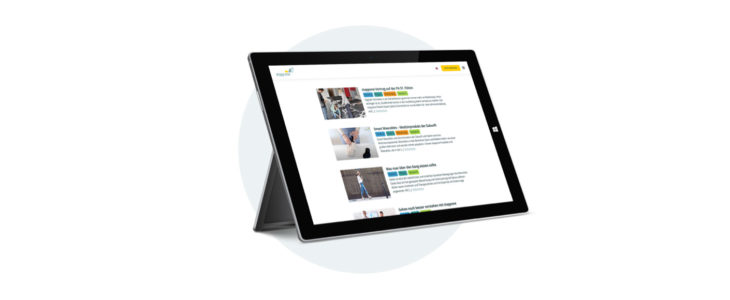What you should know about gait

Walking is one of the most natural and seemingly effortless human movements. A close examination and analysis can give many insights into a person’s health. Until now, doctors and therapists had to rely on their expertise with the naked eye. With STAPPONE Medical, there is now objective and precise data. Nevertheless, it is important to know about the gait cycle and its phases.
What exactly do the characteristics of walking such as gait cycle, stride length, stance phase and swing phase mean? Dr. Jacquelin Perry and her team from the Pathokinesiology Laboratory at Rancho Los Amigos National Rehabilitation Center, Los Angeles published a paper describing what is considered to be the “normal” functions of human gait. Their work is still considered the “bible“ of gait analysis.
Gait cycle vs. stride length
The stride length is the distance between the contact points of the two feet.¹ That is the distance between the heel contact of one foot and the heel contact of the collateral foot.
The gait cycle is the period of time between two consecutive initial ground contacts of the same foot.
Phases: stance and swing
Each gait cycle is divided into a stance phase and swing phase. During the stance phase, the foot is on the ground and starts with heel contact.
The swing phase is the “period when the foot is in the air and the leg swings forward” and begins when the foot is lifted off the ground and starts the swing.² The stance phase and the swing phase have three functional tasks:
- Weight transfer
- Single leg stance – The duration of the single leg stance is a guide for assessing the limb’s ability to support itself.³
- Mid swing
Walking speed is a key indicator of a person’s ability to walk, particularly the stride length and number of steps. Example: A patient with a total hip joint endoprosthesis before treatment covers 10m at the speed of 46.44m/min with an average step length of 0.43m and 108 steps/min leading to patient exhaustion. After the treatment, the patient manages the 10m at a speed of 68.63m/min (i.e. much faster). In addition, the stride length as well as the number of steps/min has increased. Their locomotion is now not only objectively faster, but also the quality of movement has improved significantly. 4 The patients feel motivated because the therapy has been made visible to them on the basis of the data.
While these parameters can be observed and assessed with the naked eye, this assessment is subjective and to a certain degree inaccurate. STAPPONE Medical offers the innovative solution.
stappone sensor soles for objective gait analysis
STAPPONE Medical is one of our revolutionary stappone Solutions. It consists of the intelligent stappone sensor soles and the corresponding software. The soles are simply inserted into comfortable shoes and measure the foot pressure load of patients. The medical software receives the pressure measurement data via Bluetooth and provides visual live biofeedback as well as other objective data on relevant gait parameters for gait analysis. This allows to accurately determine the speed, number of steps/minute as well as stance phase and swing phase. Not only therapy successes become visible, but any deviations in the gait pattern can be detected and possible complications can be prevented at an early stage.
Do you have questions about the use of stappone? Contact us! We are always at your disposal.
Find us on LinkedIn and become part of our community! We keep you updated about stappone, medicine and technology!
¹ Götz-Neumann, Kirsten. Gehen verstehen. Ganganalyse in der Physiotherapie. S. 25
² Götz-Neumann, Kirsten. Gehen verstehen. Ganganalyse in der Physiotherapie. S. 26
3 Götz-Neumann, Kirsten. Gehen verstehen. Ganganalyse in der Physiotherapie. S. 26
4 Götz-Neumann, Kirsten. Gehen verstehen. Ganganalyse in der Physiotherapie. S. 35

